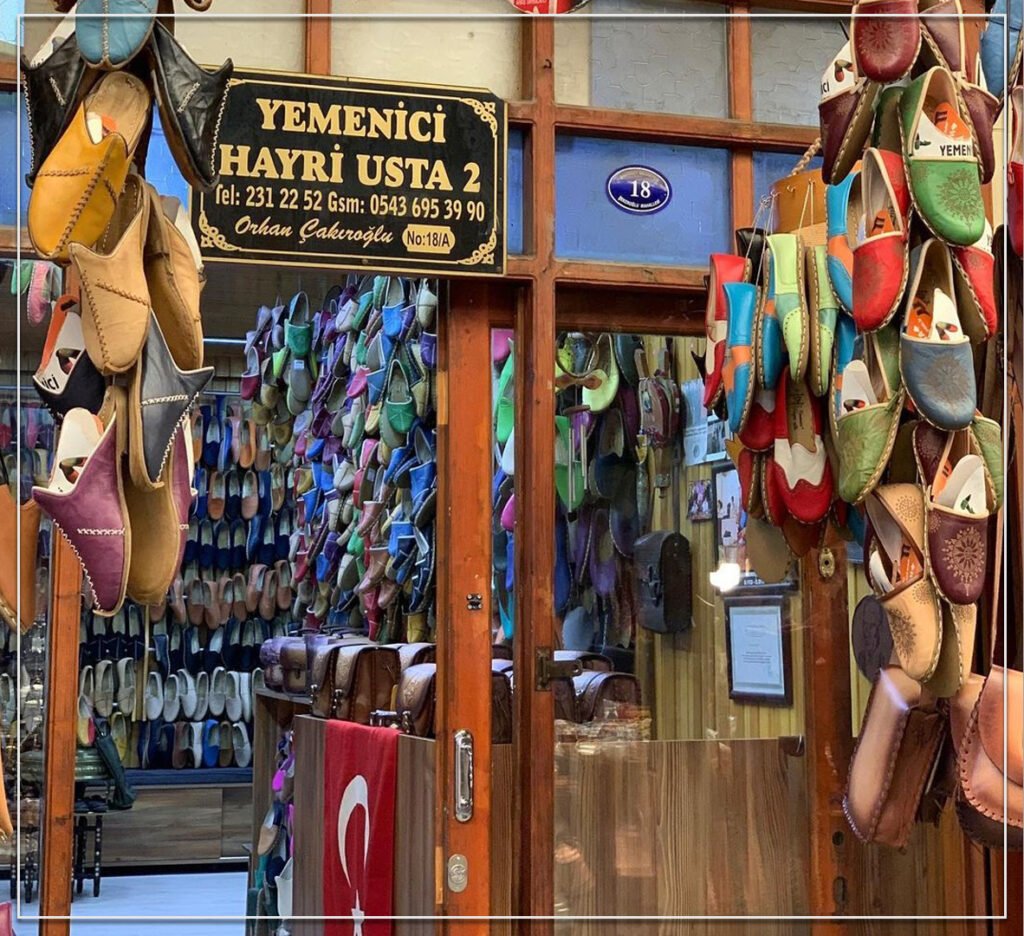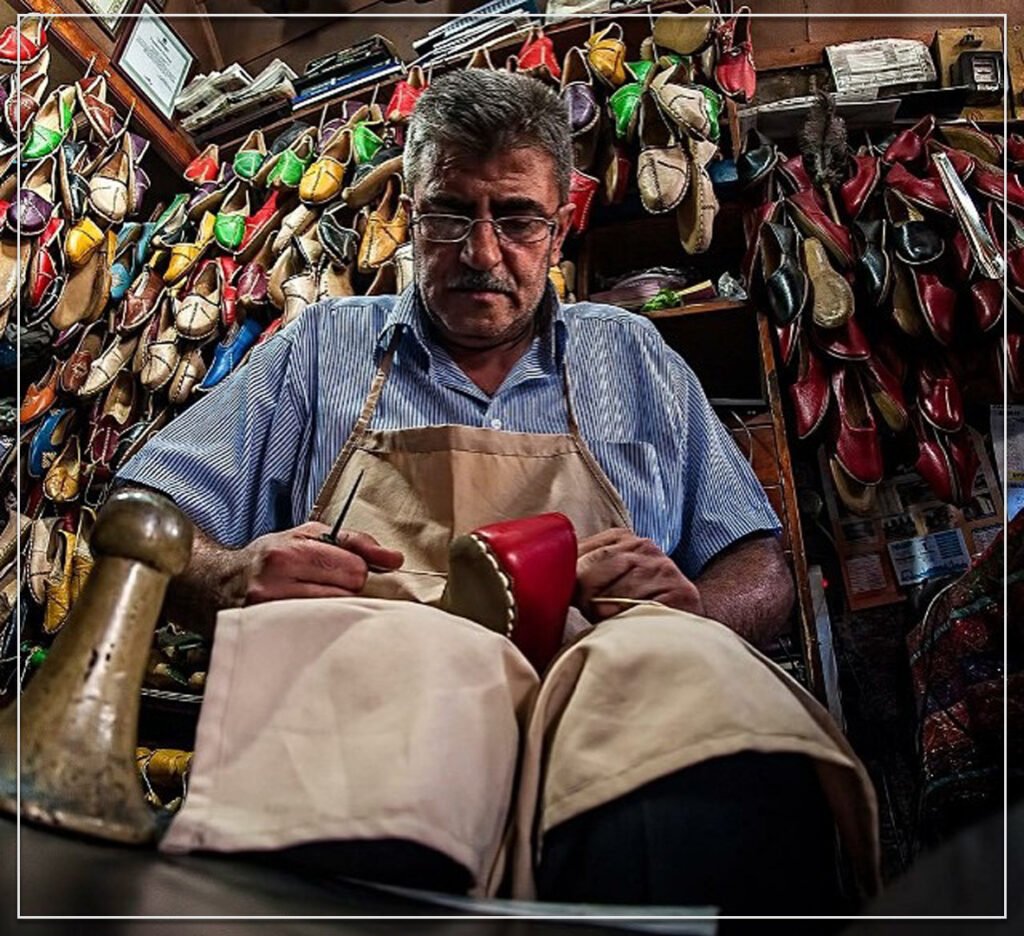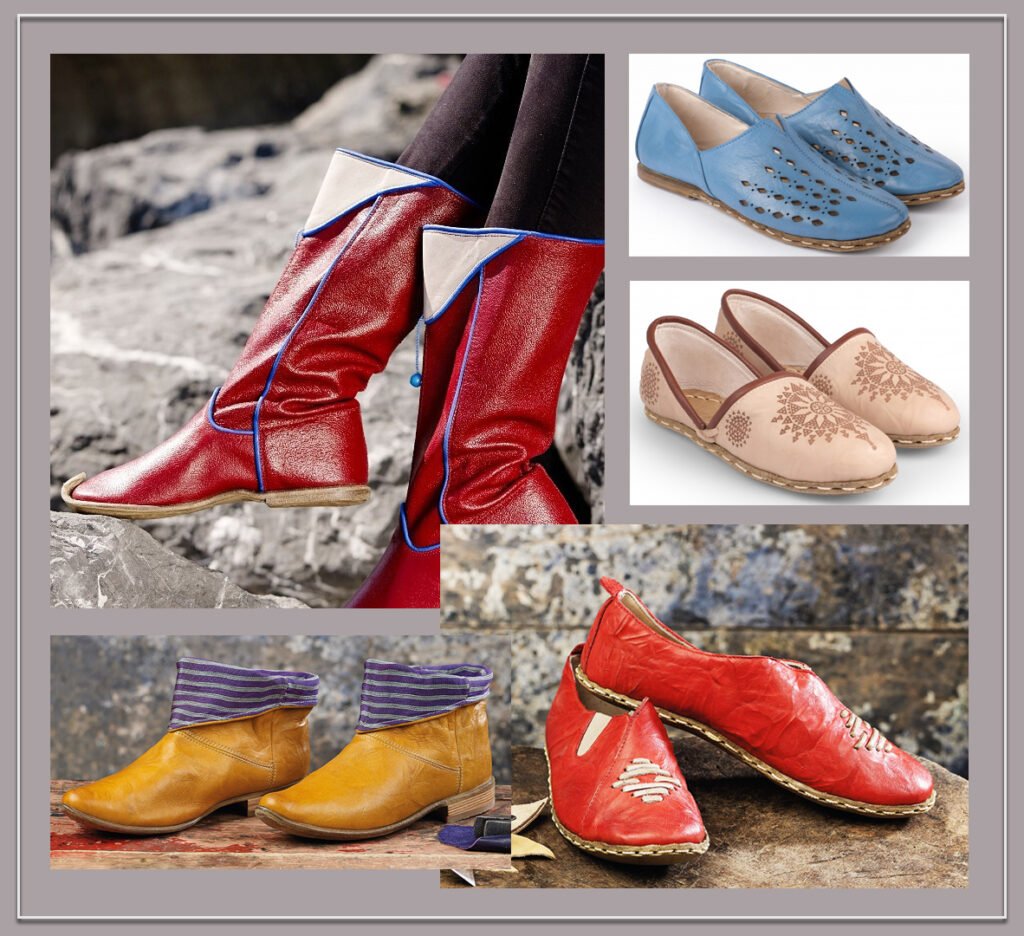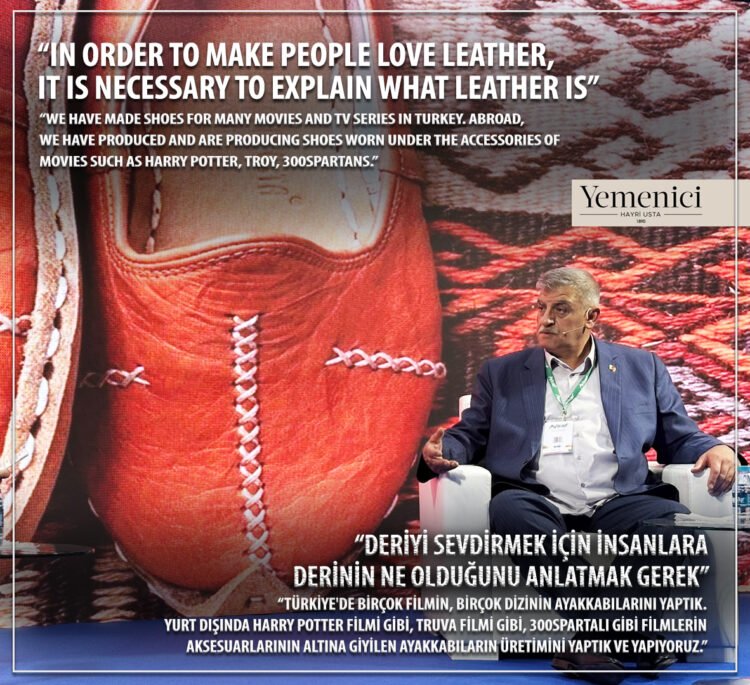“We have made shoes for many movies and TV series in Türkiye. Abroad, we have produced and are producing shoes worn under the accessories of movies such as Harry Potter, Troy, 300Spartans.”
As Magazine Leather publishing, we are with Mehmet Orhan ÇAKIROĞLU, the master of “Yemeni” shoes with his cultural name, after the “Aysaf Conversations” speech within the scope of Aysaf Fair. In our interview, he will talk about “Yemeni and leather” and his business YEMENICI HAYRİ USTA.
Mr. Orhan, can we first get to know you?
My name is Mehmet Orhan ÇAKIROĞLU, I am from Gaziantep. I am engaged in Yemeni making in Gaziantep. We continue production under the name of Yemeni Maker Hayri Usta. We have been continuing our profession as a family profession for about 130 years from our great grandfather to my grandfather, from my grandfather to my father, from my father to me.
Actually, when we say Yemeni, what is Yemeni? It means foot and head. In fact, the turban that the Prophet of Islam tied on his head is also called Yemeni. But this is the shoe worn on the foot. What is there to associate with shoes? Maybe it is the ancestor of the shoe. Maybe it is the great grandfather of the shoe. Because more than a thousand years have passed. Let’s call it the children of mankind or rather the product used by the Turks. Because this is Turkish-Ottoman-Islamic art.
It is a type of shoe made entirely by hand, using goat or calf leather for the face and sheep or calf leather for the ankles. The material used inside the Yemeni is more precisely the material that the foot comes into contact with.

By the way, do you pass this work on to your children?
I took over this business from my father. Now Yemeni has become a sector in Gaziantep. Of course, we are trying to continue this craft by teaching it to our children, grandchildren and nephews as much as we can.
While it was shown among the crafts that were about to disappear, it is now among the promising professions that are currently living and progressing. Because it has become a very big sector in Gaziantep. Maybe two thousand three thousand people make a living from this business and earn an income.
Do you have any work with UNESCO on this issue?
Let me say this, I have a certificate of identification as an artist from the Ministry of Culture. We have a record in the Education and Research Department of the Ministry of Culture. In the context of the years of experience we have given to the profession, in the context of keeping the profession that comes from fathers and grandfathers alive again, the Ministry of Culture deemed us worthy of UNESCO’s Intangible Cultural Heritage bearer, that is, the living human treasure award. We received it from our President within our ministry.
It is an indication of where we have taken this profession, which is dead, or rather about to die, from the level from which people have forgotten this profession. Because I think being a living human treasure today is the greatest reward in that profession. We are very honored to receive this award from an authority like the Presidency. I am one of the masters selected as the 51st living human treasure in Turkey.
We are still in contact with the Ministry of Culture. We participate in many festivals under the auspices of our ministry. In addition, we also have a social portal where we work with our Ministry of Culture and I am the second president. “ANATOLIAN HANDCRAFTS LIVING AND DEVELOPMENT ASSOCIATION (ANELSANDER)” With this association, we try to bring together and keep many masters like me at festivals affiliated to our Ministry of Culture.

You said it was about handicrafts, do you mean all handicrafts?
Yes. Of course it applies to all handicrafts in Türkiye. This includes ceramic art, tile art, wood carving art, illumination art, marbling art. Whatever is done with handicrafts in Türkiye, it covers all handicrafts. There are all masters in our Association. We currently have a new project in front of us and we hope that we will complete it successfully.
Let’s wish you continued success.
Thank you.
So, do you have a study on Yemeni with universities?
Yemeni is not a profession that can be learned in an instant. Basic education is necessary. Basic education should be a master-apprentice relationship. Therefore, we cannot apply to universities to teach Yemeni to an academic, an engineer, an architect or a medical student, nor can we teach Yemeni.
There are already Fine Arts and Handicrafts departments in High Schools and Universities, but there are no Master Trainers or Academicians related to Yemeni, so this may be for shoes, but Yemeni is a completely different craft. Yemeni also has features, that is, it has different features with shoes. For this reason, we only participate in talks, meetings, conferences, etc. at universities. But when it comes to education, we don’t have any contact with universities at the moment.

Well, what kind of difficulties do you face when you compare it with the shoe industry, because they are both leather, what would you like to say about that?
Now, you know that the shoe industry has gradually become machine-operated. Therefore, the idea of having a qualified employee has decreased by 50 percent. Of course, there is a need for qualified personnel in certain fields. But there will definitely be a need for skilled workers in Yemeni. Because this is a separate craft. Shoes have turned into fabrication. There are companies that produce three thousand pairs of shoes a day, there are people who produce shoes in that style, whether it is sports or shoelaces.
Because we make them by hand. Our production cannot exceed a hundred or a hundred and twenty pairs a day. Therefore, there is no competition with them. We have mutual consultations, but we cannot compare ourselves with shoemakers. If we say we should sell Yemeni in a shoe store, it would not be welcome. Today, shoemakers are located in certain regions of Türkiye, especially Gaziantep, Istanbul and Konya, which are the locomotive cities of Türkiye in terms of shoes. We are tradesmen or associations that are more related to culture and art.
You mentioned culture and arts, in this context, do you have activities in cinema and theater, for example?
So cultural activities, cultural events. However, we produce shoes that are worn under the costumes of those theaters and movies. After all, we have made shoes for many movies and TV series in Türkiye. Abroad, we have produced and are producing shoes worn under the accessories of movies such as Harry Potter movie, Troy movie, 300Spartans movie.
Rather than modernity, we are more oriented towards the past, for example, there are TV series right now, and we provide the shoes for those sets. In other words, as I said before, it takes place in the field of culture and art. They are used in theaters, they are used in local folk dances and regionally, each region is used separately.

It is actually a good result to keep the leather alive, but there is a concept called sustainability in the world. Within this concept of sustainability, leather is also a sustainable material. What would you like to say to young people and the next generation on this subject?
First of all, young people need to recognize leather. They need to know what leather is. They need to see and understand the positive or negative benefits and harms of leather. For this, they should not move away from leather, leather shoes. As close contact with leather as possible, after all, we get negative electricity from emitation products, but leather is a natural material that takes our electricity. Therefore, we need to tell young people about its benefits, harms and what it is.
We need to promote leather well. We need to introduce leather not only in terms of color, pattern, design and appearance, but also the effects of leather on the body and its health benefits. Today, people observe, ask and research what a weed does on social media. But does he/she do such a research about the leather? Maybe there is, but this research needs to be explained in a way that will appeal to social media and young people.
In other words, it doesn’t matter what the design or model of the leather shoe is, the important thing is to explain what the leather is, what its color is, how it is processed, the differences between the types of leather. Explain what leather is.
What is leather? Why is leather necessary to wear? Today it is the same species as soil. It is a living organ. It is a living creature, a cell. Today, even in historical archaeological excavations, when any piece of skin is unearthed, it reveals that there are still living cells on it. Even if they have been under the ground for thousands of years.
Leather never dies. In order to make people love leather, it is necessary to tell people what leather is, whether it has health benefits or not. It needs to be introduced well, especially in a way that young people can understand.
Thank you very much for taking your time to Magazine Leather and for participating in our broadcasts.
Thank you very much for giving me this opportunity. I hope your success continues.









